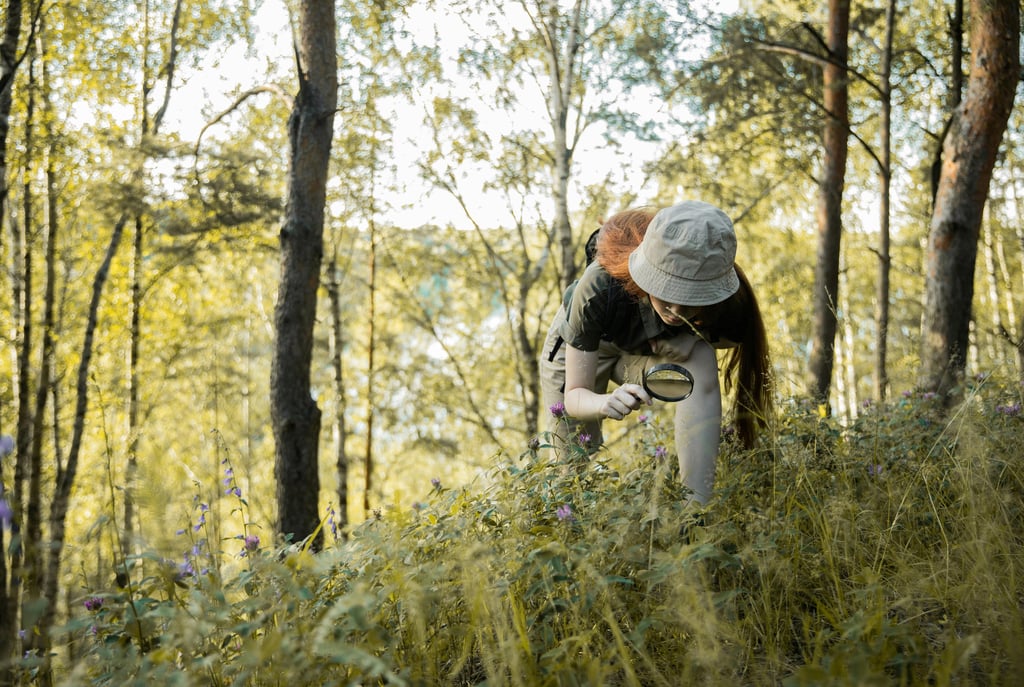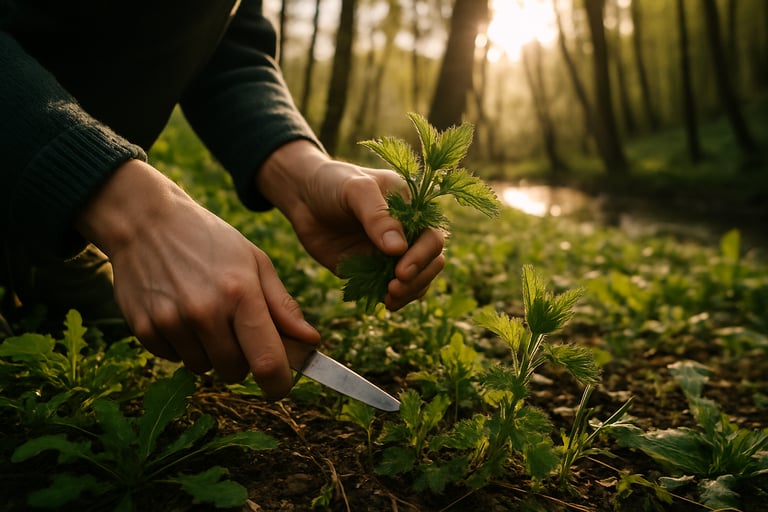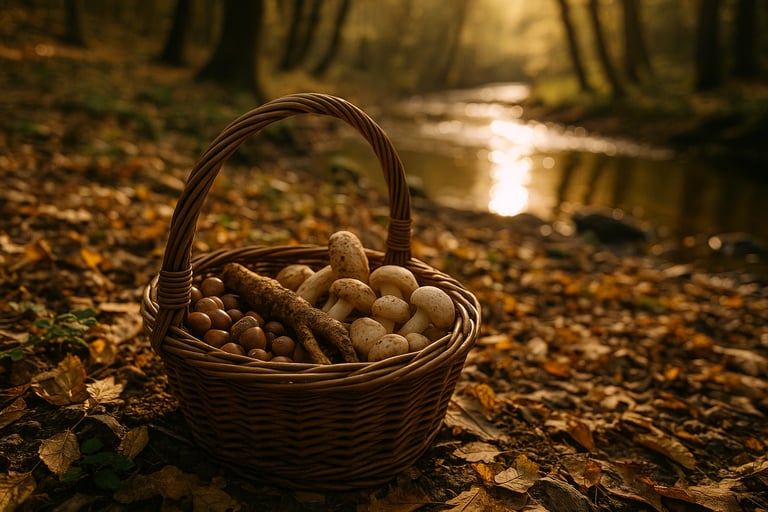Seasonal Foraging Guide: What Wild Foods to Harvest Year-Round
Discover what wild foods you can forage in spring, summer, fall, and winter with this seasonal foraging guide. Learn how to safely identify and harvest wild edible plants, berries, mushrooms, and roots year-round for wilderness survival or everyday self-reliance.


Seasonal Foraging Guide: What Wild Foods to Harvest Year-Round
Foraging with the Seasons: Why Timing Matters
Foraging isn't just about knowing what’s edible — it’s about knowing when it’s available. Plants grow in cycles, and each season brings its own harvest. If you’re trying to live off the land or just want to supplement your food with natural, wild edibles, understanding seasonal foraging is essential. Some wild greens are only around in the spring, while certain berries and mushrooms show up for a short window in late summer or early fall. To safely gather wild plants any time of year, start with the Foraging Basics: How to Start Safely and Responsibly.
This guide will walk you through what to look for in every season, how to identify safe, nutritious wild foods, and why seasonal awareness can make a huge difference in your wilderness survival skills.
Spring Foraging: Fresh Greens and Early Shoots
As winter thaws and the forest floor comes back to life, spring brings an abundance of young, edible plants. This is one of the best times to forage for wild greens, which are often tender, nutrient-rich, and easy to spot.
Look for plants like dandelion greens, wild garlic, chickweed, miner’s lettuce, nettles, and fiddlehead ferns. Many of these grow in open meadows or along streams and are best harvested young, before they become too fibrous or bitter. Spring is also a good time to look for tree buds and early shoots like cattails or wild asparagus.
Be sure to research proper plant identification — some early greens can look similar to toxic plants, especially in the seedling stage.
Summer Foraging: Berries, Herbs, and Wild Vegetables
Summer is when the forest starts to explode with color and flavor. You’ll find a variety of wild berries, including blackberries, raspberries, mulberries, and serviceberries. These are high in calories and antioxidants, making them a favorite among survivalists and hikers alike. Not sure which are safe to eat? Learn how to spot the Wild Berries You Can Eat and Ones You Should Avoid.
This is also the time to gather wild herbs like yarrow, mint, and plantain, as well as edible flowers such as wild violets or elderflowers. Wild vegetables like lamb’s quarters, purslane, and amaranth thrive in disturbed soil and sunny clearings, often growing in abundance.
Summer foraging also offers the chance to begin collecting seeds or drying herbs for later use — a useful skill for long-term wilderness living.
Fall Foraging: Roots, Nuts, and Mushrooms
As temperatures cool, nature turns its focus to storage — and so should you. Fall is the best time for gathering roots and tubers like burdock, Jerusalem artichoke, and wild carrots. These calorie-dense foods are vital for survival in colder weather.
This is also peak season for edible mushrooms, like chanterelles, morels (in early fall), puffballs, and shaggy manes. But mushroom foraging requires caution. Only pick mushrooms you can identify with absolute certainty — many poisonous varieties closely resemble edible ones. If you're new to mushroom hunting, be sure to read Mushroom Foraging for Beginners: What You Need to Know Before You Pick to stay safe.
Don’t forget nuts like acorns, black walnuts, and hickory nuts. With some basic processing (like leaching acorns to remove bitterness), they can be a great source of protein and fat to carry you through the winter months.
Winter Foraging: Bark, Pine, and Hidden Treasures
Winter doesn’t mean foraging has to stop — it just means adjusting your expectations. While fresh greens are scarce, you can still find useful plants and survival food sources if you know where to look.
Conifer trees like pine, fir, and spruce offer edible needles high in vitamin C. Pine bark can be processed and eaten in a pinch. Rose hips, left behind after the petals fall, are packed with nutrients and often remain on the bush well into winter. You may also uncover hidden caches of buried roots, or find fungi like chaga growing on birch trees.
Tracking and identifying wild foods in winter takes a sharp eye and a bit more effort, but it’s a rewarding skill that can round out your year-round foraging knowledge.
Final Thoughts on Year-Round Foraging
Each season offers unique opportunities — and challenges — when it comes to gathering food in the wild. Learning to harvest edible plants by season helps you stay prepared, eat with the land, and deepen your connection to nature.
Whether you’re building your survival skillset or simply exploring what’s available beyond the grocery store, seasonal foraging can be one of the most satisfying and sustainable ways to feed yourself from the wild.
Always forage responsibly, avoid over-harvesting, and double-check plant identifications using multiple sources. When in doubt, leave it out.




© 2025. All rights reserved About | Privacy Policy | Terms and Conditions | Affiliate Disclosure | Disclaimer


